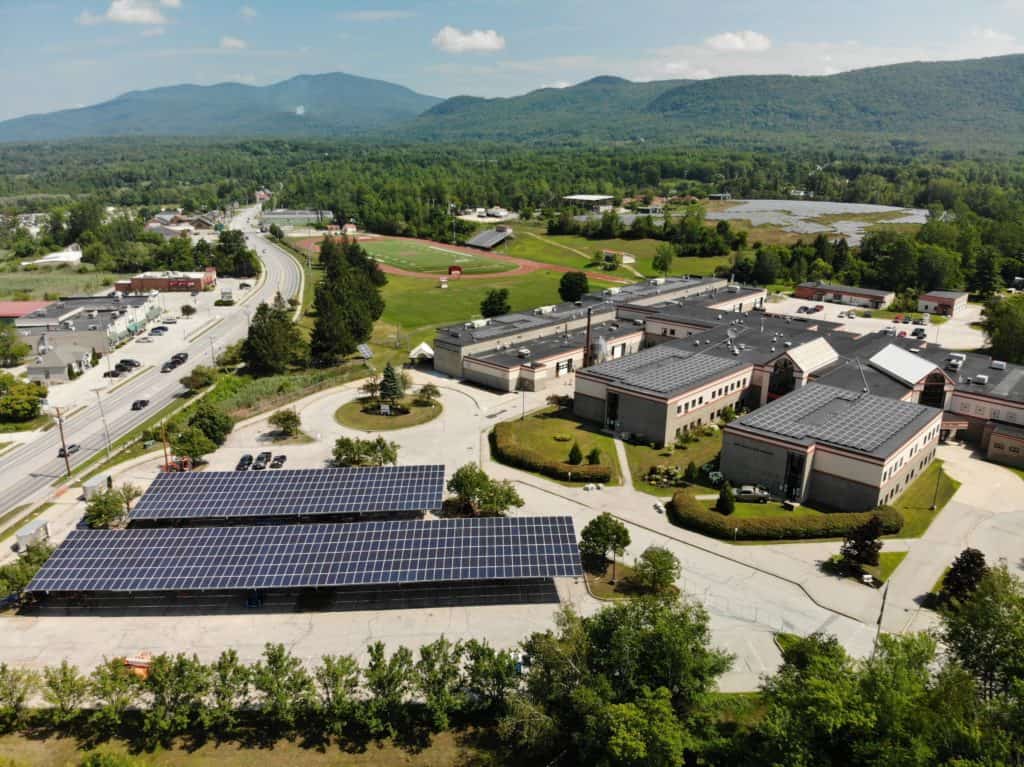
By Polly Mikula
Same Sun of Vermont is wrapping up a 500-kilowatt solar installation at Rutland schools this month.
The project is part of energy performance plan created by Johnson Controls and financed by energy savings generated through the plan, rather than taxes. “It works well in areas where there is no appetite for higher taxes,” said Khanti Munro, vice president of Same Sun in Rutland.
This is Same Sun’s biggest project yet with Johnson Controls, an international Fortune Global 500 company with over 100,000 employees, some of which are based locally.
When completed, the solar array is expected to produce 150-kilowatt at the middle school, 150-kilowatt at the high school, 150-kilowatt on its solar parking canopy and 50-kilowatt at its Allen Street Success School campus.
“We love doing solar for schools. The energy savings is huge and it provides a terrific educational opportunity for students. There will be an energy savings portal inside the school for kids to track the solar gain real-time,” Munro said. “Unfortunately, the kids will never get to see the roof arrays.”
The solar canopy parking at Rutland High School/Stafford Technical Center, however, is a different story. It’s Same Sun’s largest with 76 parking spots for faculty. It will have LED lighting facing down and as a secondary benefit will provide shade when it’s hot and help keep snow from piling up in the winter.
“While some may not like it at first, I think they’ll appreciate those benefits when they don’t have to shovel off their car,” Munro said, recognizing that while the project has enjoyed widespread support from the school community, it is not unanimous.
The Rutland City School Board of Commissioners voted in May 2019 to implement the solar structures almost unanimously — Kam Johnston was the only ‘no’ vote.
Munro did not have the exact estimate for the project’s energy offset on hand during the interview, but he described it as “quite a dent.” Adding, “the true solar capacity is closer to 700-kilowatt across all the school.”
It was permitted to 500-kilowatt because that was the allowable net-metering capacity for school projects when designed, however, since then, the state Legislature has raised the cap on school projects to 1 megawatt.
In addition to the new solar panels, efficiency upgrades will include LED lighting in all of the buildings, upgraded heating systems, new windows and more — all of which will be offset by energy savings rather than tapping into school budgets.
“The Rutland schools solar project is slated to be full completed by the end of August,” Munro said.




